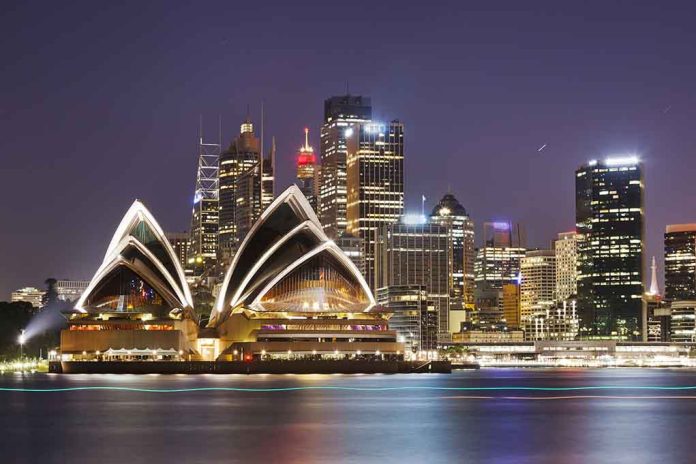
Well, folks, it looks like our friends Down Under are joining the rest of us in the “heightened alert” club. Australia has decided to upgrade its terrorism threat level from “she’ll be right, mate” to “better keep your eyes peeled.” But before we start packing our bags for New Zealand, let’s take a closer look at what’s really going on and how it compares to other Western nations.
Australia Raises the Bar
Australia has officially raised its terrorism threat level from “possible” to “probable,” signaling a shift in the nation’s security landscape. Prime Minister Anthony Albanese made the announcement, emphasizing that while the threat has increased, there’s no need for panic in the streets.
This change puts Australia more in line with other Western countries that have been grappling with elevated threat levels for some time. The decision wasn’t made lightly and reflects a growing concern about global trends in extremism and radicalization.
Global Tensions and Local Concerns
The move comes amid increasing polarization and social cohesion strain, not just in Australia but across Western nations. The Israel-Hamas conflict has been a significant catalyst, intensifying societal tensions and exacerbating existing divisions.
“The Israel-Hamas conflict is a significant driver of societal tension but not the sole cause of the increased threat level.” – Mike Burgess
Intelligence agencies have noted a rise in extremism influenced by conspiracy theories and anti-authority ideologies. This trend isn’t unique to Australia, as many Western countries are witnessing similar patterns of radicalization, particularly among younger populations.
The Digital Dilemma
One of the key concerns driving this change is the rapid online radicalization of young people. The internet has become a breeding ground for extremist ideologies, allowing for the quick spread of misinformation and conspiracy theories.
“Extremist ideologies, conspiracies, misinformation are flourishing in the online ecosystem and young Australians are particularly vulnerable,” – Mike Burgess
This digital dimension of radicalization presents a unique challenge for security agencies, as it’s much harder to monitor and control compared to traditional forms of extremist recruitment.
What Does “Probable” Really Mean?
The shift to “probable” doesn’t mean Australians should start building bunkers. Rather, it indicates that there’s now a greater than 50% chance of a terrorist attack or planning within the next twelve months.
“Probable does not mean inevitable and it does not mean there is intelligence about an imminent threat or danger,” – Prime Minister Anthony Albanese
Security experts anticipate that potential attacks are likely to be low-cost, carried out by lone actors or small groups, and targeting crowded places. This pattern aligns with recent trends seen in other Western countries.
A Balancing Act
As Australia navigates this new threat landscape, it joins other Western nations in the delicate balancing act of maintaining security while preserving civil liberties. The challenge lies in addressing the root causes of extremism without further polarizing communities.
“When the temperature of the security environment is rising, we must lower the temperature of debate.” – Anthony Albanese
This approach reflects a broader trend among Western democracies to combat extremism through a combination of increased vigilance and efforts to promote social cohesion.
Sources
- Australian government raises terrorism threat level to ‘probable’ as officials warn risk spans ideologies
- Anthony Albanese issues an urgent warning as Australia’s terrorism threat level is raised from possible to probable










